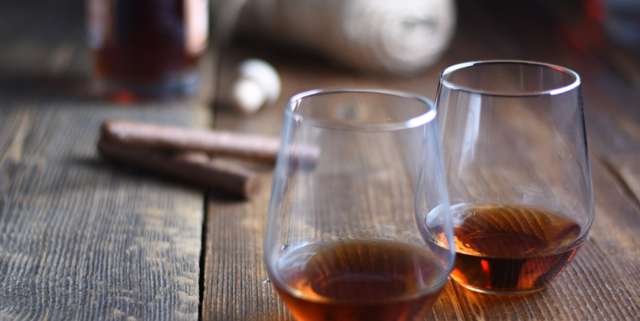Light vs. Dark Rum: Addressing Different Color Measurement Challenges
High-quality light rum is usually completely colorless and clear—in fact, the clearer and purer the rum appears, the better the perception of quality is for the product.1 However, the same is not true of dark rum. Connoisseurs of dark rum usually look for translucent, rich caramel colors in the bottle, as this is a sign that the rum has aged for a number of years in a barrel. To achieve consistency in your rum products, you need to consider the best analytical techniques for each style of rum that you produce and tailor your color quality control protocol accordingly.
Testing the Color of Light Rum
After rum has been distilled, it is naturally clear and almost completely free of color. To make light rum, producers simply filter and bottle the product immediately after distillation or store the rum in steel vats to prevent it from oxidizing and becoming too dark in color. However, if the rum is exposed to too much oxygen after distillation or it isn’t filtered enough, then it may appear yellow or amber in color or may develop a haze. This can seriously compromise both the desirability and usability of the product; consumers looking for a light rum typically want a product that is completely clear and nearly tasteless, as it is often used to add sweetness and alcohol to mixed cocktail drinks without adding any other complex flavors. To ensure that a light rum has the appearance customers are seeking, it is therefore essential to test both color and haze. A spectrophotometer that is capable of testing for both will be the best choice for light rum producers.
Testing the Color of Dark Rum
Unlike light rum, dark rum should be rich in color. Some dark rum is clear shortly after distillation and grows darker in color as a result of barrel aging, which encourages oxidation and the development of complex flavors. Other dark rum is made from brown sugar or molasses, making it take on a dark color shortly after distillation. Barrel aging can then produce even deeper hues and distinctive tastes. This is important for dark rum manufacturers, as most consumers of dark rum are looking for a bold-flavored product that they can drink straight or use in cooking. However, the deep psychological connection between color and taste leads many rum manufacturers to us food dyes to achieve the perfect shade of amber if it cannot be reached through barrel aging alone, helping to ensure aesthetic appeal and suggest a flavorful product.2 However, rum that contains no artificial colors are becoming more popular among choosy consumers. As a result, many manufacturers are seeking to improve the color consistency of their products without adding artificial colors; you can use a spectrophotometer to help you achieve this goal.
The challenge that dark rum manufacturers face is that barrel aging doesn’t always produce a uniform product. If the rum is aged for just a few months longer than usual or the barrel used in the aging process has an especially high toast level, then the rum will appear darker in color than expected. Time and materials may also produce products that are much lighter than usual. As a result, your dark rum may vary significantly in color from one year to the next. To prevent this and produce rum with greater consistency, you can use a color measurement spectrophotometer throughout the manufacturing process to test how your rum develops in color as it ages. This not only improves the consistency of your products, it also can help you refine your manufacturing process and create more complex-tasting rum.
Clarity is not a top priority in dark rums.





